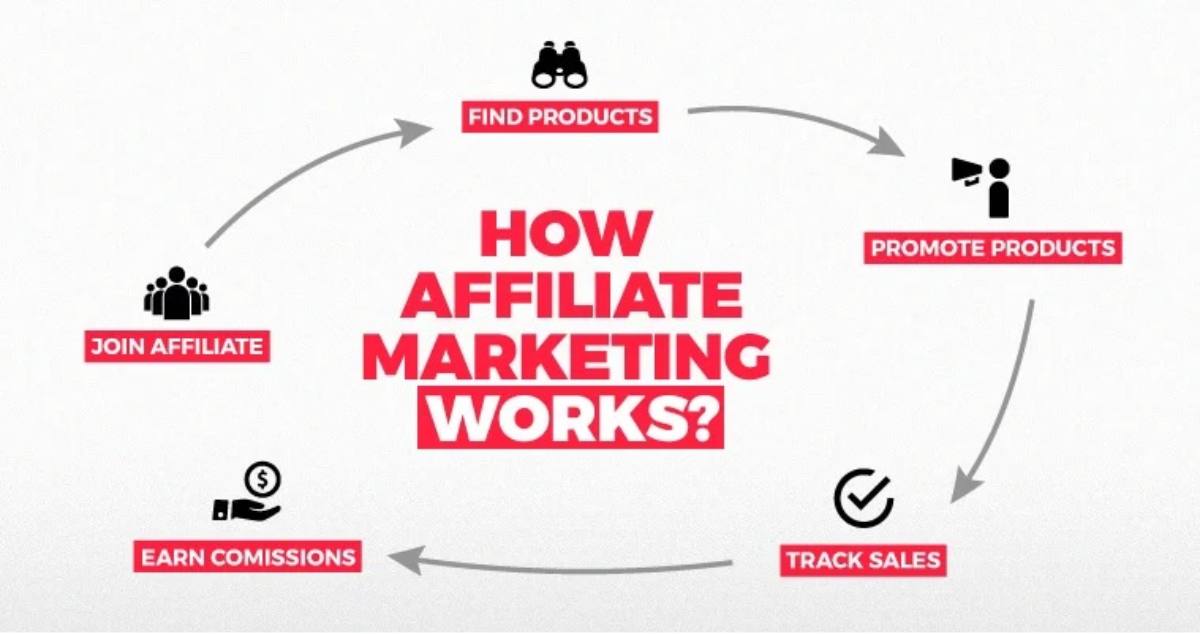Affiliate marketing is performance-based, with affiliates promoting a merchant’s product or service and also earning a commission for each visit, subscription, or sale they send to the merchant.
It allows affiliates (sometimes called publishers) to make money without maintaining product inventory, investing in services, or supporting customer relationships. Additionally, marketers (often referred to as advertisers) can promote their products and also services without spending significant resources on marketing.
Table of Contents
The Market Situation
This solution is not new. The first merchants to turn to affiliates to promote their products were CDNOW in 1994 and also Amazon in 1996. CDNOW, which was acquired by Amazon in 2002, silenced its affiliate program in 2012, but the Amazon program remains an attractive opportunity to many online sellers.
There are currently thousands of merchants ready to pay a commission to get more:
- Sales of products or services
- Leads
- Subscribers to your clubs or electronic newsletters
- Incoming calls
Participants in Affiliate Marketing
The leading players involved in affiliate marketing are the two mentioned above: the merchant and their affiliate. However, none of them could profit without a third party, namely the customer (or the consumer). A quarter comes into play quite often and also between the merchant-affiliate relationship – the affiliate network. There is also an affiliate manager who plays an important role, and that would be a fifth. To better understand the role of each of these five parts, let’s take a look at them below:
The Trader
Resellers are those who create or bring a product or service to the market. These could be wholesalers or retailers, manufacturers such as H&M, web hosts such as Bluehost, or software developers, to name a few examples. Whether it creates the products or purchases them from its suppliers, the retailer owns the respective products and services. You take care of transactions and also associated logistics (payments, packaging, shipping, etc.) and customer service. In affiliate marketing, you are the “employer” or the party willing to share your profits with the affiliate who will help you sell more.
You decide on the type of measures to compensate and their amount. They do this through their affiliate program. The latter serves as the basis for the commercial agreement between the trader and his partner. It takes care of important things like tracking, reporting, payments, and more.
The Affiliate
The affiliate is often referred to as an affiliate and markets the merchant’s products or services. They choose the products and services they want to promote and the methods and techniques they use to attract potential customers and get them to buy. There are different types of affiliates depending on the tools and strategies used. The most popular types include content, coupons, data feeds, visualization, loyalty, social media, and video affiliates. A merchant should work with affiliates who fall into more than one of these categories at the same time. This means that affiliates use different marketing methods and channels to reach target customers and generate leads and sales.
Affiliates also have a lot to gain by combining different marketing techniques and strategies. It will be easier for them to convince marketers to include you in their affiliate program, and they will be able to reach larger audiences, generate more sales, and make more money.
The client
The customer is the one who make the sale, the one who makes a profit for both the retailer and his partner. They are the target of both merchants and especially affiliates. To reach and convert them, they can use product or service ratings, reviews, tutorials, unboxing videos and more, ads, social media posts, mobile app locations, paid searches (if authorized by the merchant), and much more. Marketing techniques.
It is important to note that is no additional cost to the customer when purchasing through an affiliate link, as the retailer’s retail prices already include affiliate marketing fees. On the contrary, some affiliates save money for consumers by sharing their earnings with them. Frequent examples here are coupons and loyalty partners (especially cashback).
The Affiliate Network
They are the middle man between merchant and affiliate, the party that brings merchants and affiliates together and provides both parties with the technology to drive their relationships. For merchants, an affiliate network means an opportunity to list their products and services where affiliates can view them and apply to be affiliated. For affiliates, the same network becomes a massive database of brands, products, and services from which they can choose which ones to promote to earn money.
The Affiliate Manager
Like any serious marketing campaign, the merchant’s affiliate program remains managed. The affiliate manager is the person who remains tasked with overseeing and developing the merchant’s affiliate marketing program. The management of the affiliate program can also outsource to an agency.
Affiliate Marketing Payment Models
Payment per sale or Cost per sale (abbreviated as PPS or CPS)
[Pay per] lead / Cost per lead (PPL / CPL)
[Pay per] call / Cost per call
[Pay per] click / cost per click (PPC / CPC)
[Pay per] view / Cost per view (PPV / CPV)
Payment per installation / Cost per installation (PPI / CPI)

